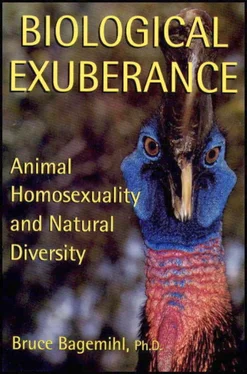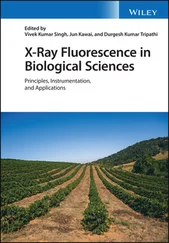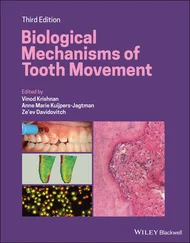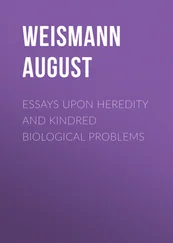Second, even if behaviors are classified as nonsexual or having a nonsexual component, the behavioral categories to which they are assigned (aggression, greetings, alliance formation, etc.) are not monolithic. Many important questions remain concerning the forms and contexts of such behaviors—questions that are often overlooked once they receive their “classification.” Just because we “know” that a given behavior is “nonsexual” does not mean that we then know everything about that behavior. Apparently sexual behaviors between males in both Bonnet Macaques and Savanna Baboons, for example, are classified as social “greetings” interactions. Yet there are fundamental differences between these two species, not only in the types of activities involved, but in the frequency of participation, the types of participants, the social framework and outcome of participation, and so on. 118Ultimately, classifying such behavior as “nonsexual” is as meaningless, misleading, and unilluminating as many investigators claim a sexual categorization is, if it obscures these differences or fails to address their origin.
Finally, the relationship between sexual and nonsexual aspects of behavior is complex and multilayered and does not fit the simple equations that are usually applied, namely same-sex participants = nonsexual, opposite-sex participants = sexual. In many species, there is clear evidence of the genuinely sexual aspect of behaviors between animals of the same sex, using the same criteria that are applied to heterosexual interactions—for example, penile or clitoral erection, pelvic thrusting, penetration (or cloacal contact), and/or orgasm. 119In still other species there is a gradation or cline between sexual and nonsexual behaviors that defies any rigid categorization—or else there is a sharp distinction between the two, with both occurring among animals of the same sex. Most importantly, the sexual and nonsexual aspects of a behavior are not mutually exclusive. An interaction involving genital stimulation between two males or two females can be a form of greeting, or a way of reducing tension or aggression, or a type of play, or a form of reassurance, or any number of different things—and still be a sexual interaction at the same time. Ironically, by denying the sexual component of many same-sex activities and seeking alternative “functions,” scientists have inadvertently ascribed a much richer and varied palette of behavioral nuances to homosexual interactions than is often granted to heterosexual ones. 120Because heterosexuality is linked so inextricably to reproduction, its nonsexual “functions” are often overlooked, whereas because homosexuality is typically disassociated from reproduction, its sexual aspects are often denied. By bringing these two views together—by recognizing that both same-sex and opposite-sex behaviors can be all these things and sexual, too—we will have come very close indeed to embracing a fully integrated or whole view of animal life and sexuality.
Chapter 4
Explaining (Away) Animal Homosexuality
In August 1995 a historic event took place: a special symposium on sexual orientation in animals was held at the 24 thInternational Ethological Conference (ethologists are zoologists who study animal behavior). This was an unprecedented occurrence: the first time that animal homosexuality was formally recognized by a zoological organization as a legitimate subject of inquiry unto itself. As hundreds of zoologists and other scientists gathered from more than 40 countries around the world to discuss the latest findings and hypotheses, this conference held the promise of inaugurating a new era in the study of animal homosexuality—one characterized by an absence of the judgmental attitudes chronicled in the previous chapter.
Unfortunately, what actually transpired at the conference is symbolic of the pitfalls that have plagued discussions of animal homosexuality throughout the scientific study of this topic. The symposium’s stated mission was to explore “behavioral correlates of sexual plasticity”; its organizer’s opening remarks even invoked Paul L.Vasey’s recent work on primate homosexuality—to the visual accompaniment of giant photographs of human gay couples projected on the screen. 1Yet only a handful of papers at the symposium even mentioned homosexuality, let alone dealt with it in any depth. Most were concerned with the hormonal and neurological correlates of male and female differences in behavior and anatomy—reflecting the still widespread view that homosexuality is simply an example of gender “inversion” or “gender-atypical” behavior (e.g., males exhibiting “female” behavior patterns and vice versa). Ironically, among the conference attendees were a veritable who’s who of zoologists who have observed homosexual behavior firsthand in wild animals—a treasure trove of information on the topic that went virtually untapped by the symposium’s organizers and all but unnoticed by the conference-goers. 2On the final day of the conference, after it became apparent that animal homosexuality would receive no more than a cursory discussion in any of the formal presentations, one zoologist tacked a hand-scrawled note on the public message-board: “I am looking for examples of homosexual affairs in insects, please contact…”—a cogent reminder of both the desire for, and lack of, information on this subject at the very locus where it should be most available.
What happened at this conference is not unusual. The scientific discourse surrounding animal homosexuality has been preoccupied with finding an explanation for the phenomenon, often at the expense of providing comprehensive descriptive information about, or acknowledgment of, the actual extent and diversity of same-sex activity throughout the animal kingdom. Rather than being seen as part of a spectrum of natural variation in sexual and gender expression, homosexuality and transgender are viewed as exceptions or anomalies that somehow stand outside the natural order and must therefore be “explained” or “rationalized.” In most respects, by trying to answer the question “Why do some animals engage in homosexual behavior?” scientists have simply found an opportunity to continue many of the same homophobic attitudes documented in the preceding chapter (while ignoring the biases inherent in such a question in the first place). Significant numbers of zoologists are willing to concede that same-sex courtship, copulation, and pair-bonding are indeed “sexual” or “homosexual” activities. However, they commonly propose alternative explanations for these behaviors premised on the notion that this activity is still in some way “anomalous” or “aberrant.” Ultimately, most such attempts to find an “explanation” have failed outright or are fundamentally misguided. In this chapter we’ll explore four such “explanations” that crop up repeatedly in the scientific and popular discourse surrounding animal homosexuality—the idea that homosexuality is an imitation of heterosexuality, a “substitute” activity when the opposite sex is unavailable, a “mistake,” or a pathological condition. These explanations need to be addressed not only because they are widespread within the scientific establishment, but also because they form part of the popular mythology surrounding animal homosexuality. Each of these ideas or analyses is in fact incorrect—or at the very least, only partially relevant.
Significantly, each of these explanations has also been proposed at various times as the “cause” or “reason” for human homosexuality, and equally as often shown to be false. In fact, the language and logic of many of these explanations for animals are directly out of the psychopathological analyses of human homosexuality from the 1940s and 1950s (which, in turn, are a continuation and elaboration of earlier prejudicial attitudes about “abnormal” behaviors). So similar are they to the luridly homophobic accounts of these eras that many such descriptions would be entirely interchangeable were it not for use of the word animals in one and people in the other. The nearly seamless continuity between attitudes toward human and animal homosexuality is exemplified by the following pair of “observations,” each of which reduces homosexuality to a form of role-playing imitative of heterosexuality:
Читать дальше












